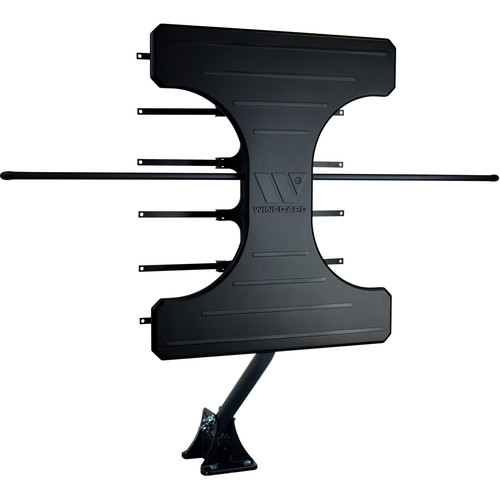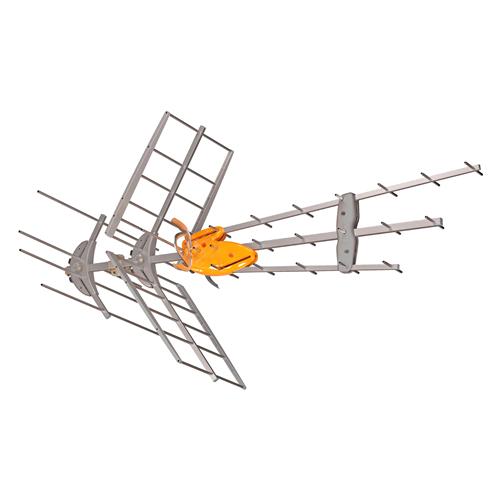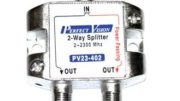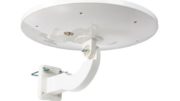Take a look at this antenna. It’s our popular HDB91X from Xtreme Signal. It’s a fairly simple design, with a row of X-shaped directors and a pair of reflectors in the back. The actual antenna element is such a small part of the whole antenna that you can barely see it in that image.
Let’s talk about those reflectors
Adding reflectors to an antenna is an easy way to double its sensitivity. The reflectors take signals that don’t hit the front of the antenna’s receiving element and bounce them toward the back of the element. In that way, you get a lot more “bang for your buck.” That’s why they’re so common.

Some reflectors, like the ones on this Winegard Elite, are simply rods that are straight up and down. Reflectors like this are effective, but the ones that angle toward the towers are even more efficient.
It’s really like a satellite dish

This antenna shows a little more of what an antenna reflector could look like. It takes more engineering, and more cost, to make a reflector that’s curved and scooped out like this. This design is more efficient, but the extra expense might mean you won’t buy it. So, many manufacturers settle for flat panels that angle inward. Here’s another example:

Our popular Televes DATBOSS MIX uses two sets of reflectors. The longer ones at the very back of the antennas bounce VHF frequencies, while the taller ones in front of that bounce UHF ones. You need longer reflectors to bounce lower frequencies more effectively. That’s the genius of this design.
While we’re talking, here’s another question.
When I tell people that a reflector acts like a satellite dish, they tend to ask me why a reflector isn’t solid like a satellite dish. It’s mostly air. Yet, it works very well.
The principle that lets antenna reflectors be so open was discovered by Faraday. The idea is that a signal can be trapped or reflected by a “net” or bars comes down to the fact that antenna broadcast waves are a lot bigger than you’d think. The largest ones for TV broadcast are over 15 feet wide. So anything with holes smaller than the waves you’re trying to reflect will work as well as a solid reflector.
Satellite dishes have solid reflectors because their waves are so much smaller. Some of them are smaller than an inch in size. While this means you could actually have a dish with small holes like a window screen, such a reflector wouldn’t be much smaller or lighter and would cost more to make.
On the other hand, antenna reflectors are a lot lighter and less expensive because of all the air that’s in them.
Choose the right antenna from Solid Signal
No matter whether you need a small indoor antenna, or the largest TV antenna made for consumer use, you’ll find what you’re looking for from our vast selection of antennas. If you need help choosing, why not call us at 888-233-7563 or email us at [email protected]?





